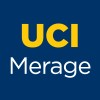
A Study to Evaluate the Botulinum Toxin Type A for Injection(HengLi®) in Subjects With Post-stroke...
Cerebrovascular AccidentThis is a multicenter, double-blind, randomized, placebo-controlled study designed to compare Botulinum Toxin Type A for Injection (HengLi®) with placebo on the efficacy and safety of treatment in post-stroke subjects with focal wrist, finger and in some cases, thumb spasticity. Approximately 180 subjects will be enrolled. The core period of the subjects will receive a single treatment session of intramuscular HengLi® 200U or 240U (if thumb spasticity is present) or placebo in a randomization ratio of 2:1. Research contains two parts: core phase and extension phase. In the core phase, subjects will finish 6 visits (12 weeks ) after initial injection. During the extension phase, subjects will accept two follow-up visit (6 weeks). Outcome measures include changes from baseline at every post injection visit as measured on the Modified Ashworth Scale (MAS), Disability Assessment Scale (DAS) and Global Assessment Scale(GAS). The primary efficacy endpoint is the change from baseline at week 6 for wrist flexor muscle tone as measured on the Modified Ashworth Scale. Safety parameters will also be measured including adverse events, vital signs (pulse and blood pressure) and clinical laboratory tests (haematology, serum chemistry and urinanalysis).

A Pilot Study of Robot-assisted Therapy for Post-stroke Forearm and Wrist Rehabilitation Training...
StrokeA pilot study to assess the effectiveness of CR2-Haptic and determine the feasibility of including robotic therapy into the daily rehabilitation program.

Efficacy Study of the LARA Wheelchair System for Subacute Stroke Patients
Cerebrovascular AccidentThis study will test the effectiveness of a new lever drive wheelchair, LARA - Lever Actuated Resonance Assistance. LARA facilitates patients in performing a high amount of practice using their moderate to severely impaired upper extremity after stroke. Investigators will recruit 44 subjects with subacute strokes to participate in the study through the acute rehabilitation unit of the UC Irvine Douglas Hospital. Study participants will be randomized into 2 groups: LARA therapy group or standard therapy group. The LARA therapy group will use LARA to propel themselves to therapy appointments in the unit and to play video games with the affected upper extremity for 30 mins / day. The standard therapy group will use a standard wheelchair to propel themselves using their unaffected upper and lower extremities. They will be asked to perform a matched duration of standard arm exercises for 30 mins/ day. This program of standard arm exercises was developed by an OT at the Rehabilitation Institute of Chicago which consists of graded-difficulty table-supported exercises. This study will have 3 assessment visits: baseline, 3 weeks after therapy or upon discharge from the acute rehabilitation unit if sooner, and a 3-month follow up.

Study of Modified Constraint-Induced Aphasia Therapy Schedule to Treat Patients Following Sub-acute...
AphasiaThe purpose of this study is to assess the feasibility of modified Constraint-Induced Aphasia Therapy (CIAT) in the early sub-acute stage and to examine the efficacy of modified CIAT versus standard treatment with the same intensity of intervention.

Thermal Stimulation for Stroke Patients
StrokeUpper Limb ParesisSensory and/or motor deficits in upper limb following stroke often have negative impacts on their daily living. Thermal stimulation with hot and cold pack alternatively incorporated into conventional rehabilitation has been reported and proved to be effective for upper limb functional recovery after stroke. However, whether hot- and cold-water stimulation alternatively based on thermal stimulation also has the effect still remains unknown. The aim of present study is to investigate the facilitated effect of hot and cold water stimulation alternatively on upper limb after stroke.

Randomised Control Trial for Improving Functional Outcome From Stroke in End Stage Renal Disease...
StrokeEnd Stage Renal DiseaseTITLE Randomised Control Trial (RCT) for improving functional outcome from stroke in renal disease patients DESIGN Eandomised Conrol Study AIMS Undertake detailed characterisation of stroke (including recently developed imaging techniques at Imperial) of stroke in renal disease patients including clinical, imaging and epidemiological data To Investigate if passive intervention using hand grip device during dialysis sessions will improve functional outcome from stroke in end stage renal disease patients. OUTCOME MEASURES Primary outcome:. 3 months change in Upper-Extremity Fugl-Meyer scores. Secondary outcome: 3 months change in NIHS & Bartel scores POPULATION Ischaemic and haemorrhagic stroke patients with renal disease treated at Hammersmith's Hospital's renal Unit. . ELIGIBILITY Data of all patients with renal disease and imaging proven stroke will be retrospectively analysed. RCT will be conducted on End Stage Renal Disease patients with acute (<7 days) stroke affecting arm. DURATION 2 years

Transcranial Magnetic Stimulation in Children With Stroke
HemiparesisNeonatal Stroke3 moreThis is a pilot study of repetitive transcranial magnetic stimulation (rTMS) to test tolerance and efficacy in children who have hemiparesis from acquired or presumed perinatal stroke.

Balance Rehabilitation With Sensory Recalibration After Stroke
Left-sided Hemiplegia Affecting Dominant Side as Late Effect of Cerebrovascular AccidentThe main objective of this study is to test the effectiveness of a rehabilitation program with cervical vibration and/or prism adaptation in patients with left hemiplegia on balance.

Danhong Injection in the Treatment of Acute Ischemic Stroke
Acute StrokeThe purpose of this study is to determine whether Danhong injection is effective in the treatment of acute ischemic stroke.

Intravenous Autologous Bone Marrow-derived Stem Cells Therapy for Patients With Acute Ischemic Stroke...
Acute StrokeA multi-centric initiative to study safety,feasibility and efficacy of using intravenous autologous bone marrow mononuclear cells(BMMC) in patients with acute ischemic stroke.This phase of study is visualised as phase 2 study and will aim to determine dose response gradient of stem cell therapy and to explore if there is favorable risk to benefit ratio for autologous stem cell therapy in patient with acute ischamic stroke.
